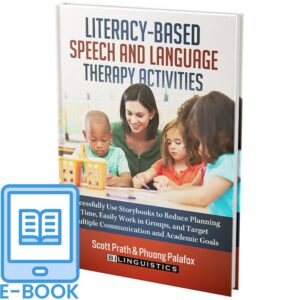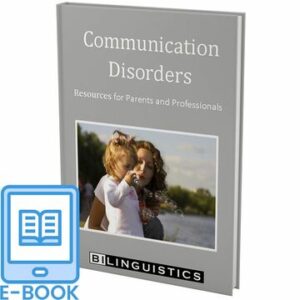Dynamic Assessment – How to Get Great Diagnostic Information Quickly E-book
$9.99

Easily, quickly, and accurately assess children from any language or cultural background!
- Know if standardized testing results are accurate
- Test children from non-mainstream cultures
- Account for the influence of home languages on your results
- Develop accurate goals
We evaluate hundreds of children every year and almost every student we test is bilingual or comes from a diverse background. ALL of our evaluations include dynamic assessment. This interactive e-book contains explanations, video examples, case studies, and links to materials that you can download. This way you will learn a modern, fast approach to dynamic assessment so that you can easily incorporate non-standardized testing in your reports.
What’s inside? Take a look at a few pages.
E-books are non-refundable.
Like any profession, the parts of the job that are the most difficult, complex, or least understood get the most attention. People struggle, and they naturally reach out to friends, colleagues, or people with expertise, hoping to find a way to make these aspects of their working lives easier or more manageable.
Through our website, blog, community, and live presentations, the part of our job that gets the lion’s share of the attention deals with the subtle art of speech and language testing. And with a quick glance at the some of the questions we get, it’s clear that it’s not a simple matter:
– How do I know if my standardized-testing results are accurate?
– How do I test children from a non-mainstream culture?
– How do I test bilingual children?
– What is the best way to get accurate goals?
– What do I do if I think a child did poorly during testing because they have never done something like this before (experience)?
– I want to write and test faster, but how do I do that and still feel good about the results?
There is a solution.
After 20+ years of conducting evaluations, we are excited when we get these questions because we have the answer! Not only that, but it’s the same answer for every one of these questions.
“Use Dynamic Assessment!”
If your response to hearing this is like most, it probably ranged from intrigue, to eyes glazing over, to all-out revolt.
Rest assured, Dynamic Assessment (DA) is amazing! Yet, it has to be one of the most misunderstood and underutilized tools in the entire field of speech language pathology. If you don’t know what DA is, you are actually at an advantage. Many of us got out of grad school or our first job with preconceived notions that limited our ability to understand how quick and powerful DA is at making our testing lives easier. Not to mention, it’s free and usually takes only a few minutes.
The increasing diversity in the United States has given a new role to educators and speech-language pathologists. Many teachers express uncertainty about how to differentiate speech and language errors that result from native language influences and those that are indicative of speech-language impairment. This same challenge falls on speech-language pathologists, who make diagnostic decisions about students’ communication skills. Many native language influences mimic signs of speech-language impairment, making it impossible to use the same rules for bilingual students that we use for monolingual students. Additionally, patterns of language influence change depending on the native language of the student, further complicating the decision-making process.
The concept supporting this framework is simple: In general terms, if sounds or structures exist in both languages, they should not be affected in second language production; if sounds or structures do not exist in both languages, the influence of one language on another can be expected. The goal then is to understand the different sound systems and structures of a language in order to identify which errors are of true concern.
Need CEUs?












Reviews
There are no reviews yet.